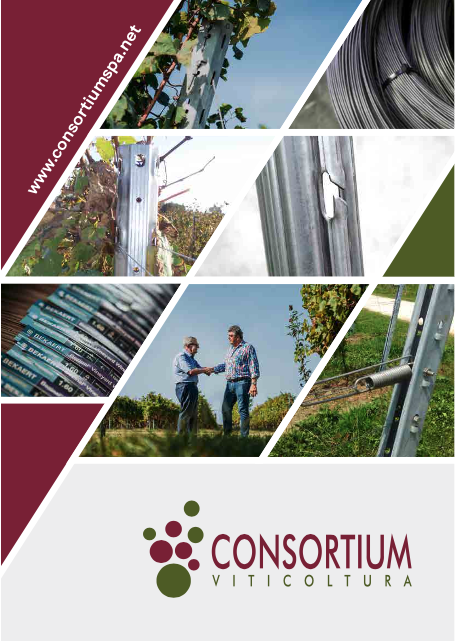Zinc = a protective element
Steel is a widely used material in the production of vineyard poles: it is cheap and easy to work with. However, when exposed to the weather it rusts and thus loses its texture. For this reason, many methods are used to protect the surface of steel. The most effective method is hot-dip galvanizing, since:
- Zinc completely covers the surface and therefore protects it
- Hot-dip galvanizing forms in the contact zone a Zn + Fe alloy
- A protective patina forms on the zinc
- The zinc covering the steel represents anodic protection, this means that the zinc sacrifices for the steel by wearing out in its stead and thus increasing the life of the pole
After profiling, the steel posts are immersed in a bath of liquid zinc at a temperature of about 450° C, thus coating them with an alloy layer of higher hardness than the steel underneath. The thickness of the zinc layer varies from 50 to 80 µm. The poles are then cooled rapidly to prevent swelling of the intermediate alloying zone, which does not sufficiently protect the profile. Freshly galvanized poles have a shiny surface that is not sufficiently protective. Maximum protection is achieved when a matte-looking zinc hydroxycarbonate film forms on the surface. This surface film is achieved by exposing the poles to moisture and air long enough for it to form. To accelerate the formation of the protective patina, it is recommended to alternately wet and let dry the piles a few times (5÷6 times), especially in the part to be buried; for this operation, a common steam cleaner can be used, which allows wetting the piles in all their interstices.
Follow these directions well, then, for proper installation of poles.
Small scratches on the galvanizing are not a problem, due to an electrolytic (Cathode-Anode) process that is triggered by atmospheric moisture, but severe damage on the pole surface can be dangerous because it can destroy a considerable layer of zinc. Damage with a surface area of several millimeters should be treated in the following manner: remove any rust that may have formed and apply one or more coats of zinc paint. Repair with paint does not have the same quality as hot-dip galvanizing, but it considerably prolongs the life of the galvanizing.
IMPORTANT
The directions we give below for proper curing of poles are necessary to prolong the life of the installation. These methods apply to any galvanized artifact.
- Store the poles outdoors-this way they slowly form a protective patina.
- In case of prolonged outdoor stay, place the poles on sleepers in a sloping position so that they are well ventilated and water stagnation does not occur.
- Control the wind direction so that ventilation keeps the poles dry.
- New poles should not be near fertilizers or chemical vapors or corrosive substances in general. Before the protective patina has formed, polished poles should absolutely not come into contact with chemicals and be planted in permanent moisture (winter).
- Polished poles can be planted between late March and mid-September because they automatically form a protective patina during this period. Aging seasoning is required at other times (see beginning part of text)
- It is necessary to treat the poles for at least 1 m of the part that will be buried. The protective layer of patina formed by the aging procedure prevents the zinc layer from peeling off. It is not the shiny zinc layer that protects the pile, but the gray patina.
HOW TO PLANT THE STAKES
Stakes are usually planted with a hydraulic system. For stony soils, it may be necessary to drill a hole in the ground before planting the pole.
Europals should be planted at the distance of 4÷6 m depending on the height and depth as per "Table A". In the case of the use of drills, it is good to avoid the formation of empty volumes in the soil by compacting it even by means of pressurized water jets. It is good to pile soil at the base of the piles to prevent them from being submerged in standing water, in fact they are not suitable for use in marshy areas.
Pole Height
2.30 m
2.50 m
2.70÷2.80 mt
3.00 mt
Minimum planting depth values
0.50 mt
0.60÷0.70 mt
0.70÷0.75 mt
0.80 m

